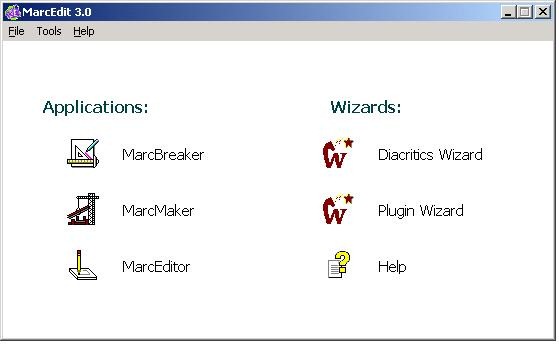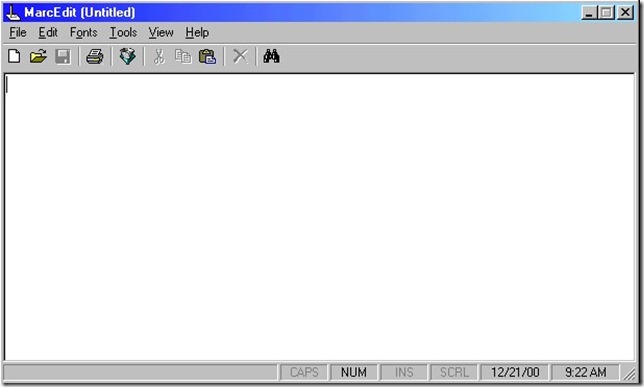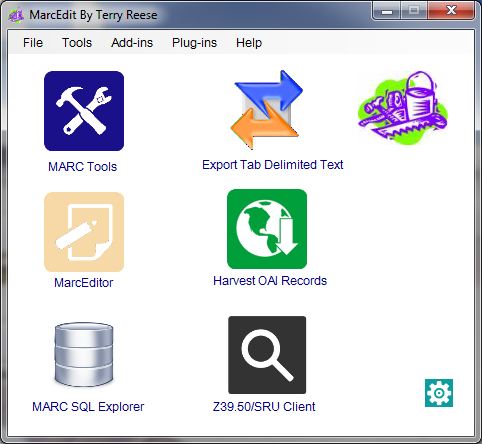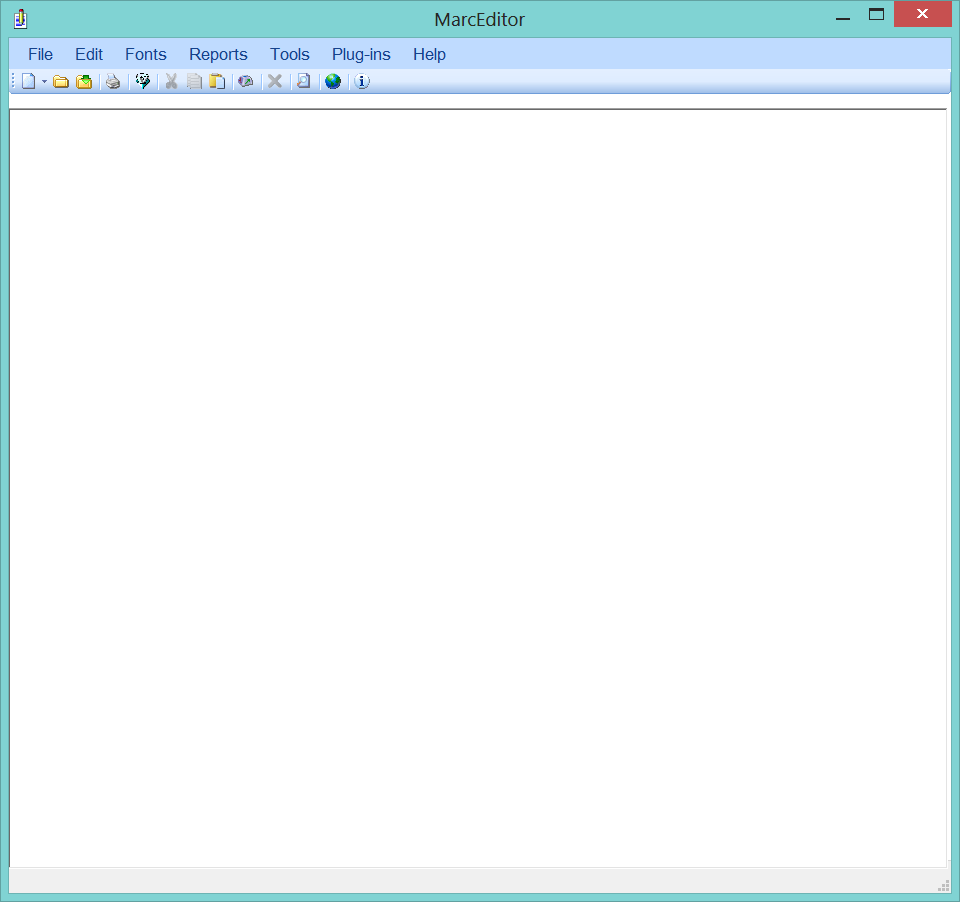Figure 6 shows the first version of the MarcEditor, which appears in MarcEdit 3.0. The MarcEditor introduced for the first time, this idea of a specialized notepad environment designed around the manipulation of MARC records. While previous version of MarcEdit included an edit window for quick edits, the MarcEdit took this a step further, by allowing users to load very large record sets and then globally make modifications uses a specialized set of editing tools designed around the MARC field/subfield structure. What’s more, by developing these tools around the universal MARC structure, rather than MARC21, the editor was able to be used with any flavor of MARC, making the application available to international users as well.
MarcEdit 5+
The current version of MarcEdit is a feature rich metadata client. Unlike previous versions that focused solely on MARC data, the current version of MarcEdit introduces the ability to process various flavors of XML data, delimited data, and MARC data. In addition to function related to the editing of metadata, the program includes tools to capture existing records, providing an OAI records harvester, a Z39.50 client, and functionality to directly integrate the application with Connexion and various ILS systems. For information about the various tools and functions found in the current version of MarcEdit, please see the table of contents.
Figure 7: MarcEdit 5+ Startup
Looking to the Future
Libraries currently find themselves in a volatile metadata environment. Nearly every conference focused on technical services or metadata processing includes a number of sessions relating to how we deal with change, or addressing the migration from AACR2 encoded data to the new RDA [ref]Resource Description and Access, http://access.rdatoolkit.org/[/ref] encoding standard. On the horizon there is the Library of Congress’s Bibframe [ref]Bibframe Initiative, http://bibframe.org/[/ref] that seeks to replace the MARC format with a new bibliographic framework that takes advantage of current technology and data models. How these changes shake out will certainly affect MarcEdit.
I’m trying to take a pragmatic approach to how MarcEdit addresses the many new metadata initiatives moving through the library community. In 2013, MarcEdit introduced the RDA Helper, a tool designed to help libraries automatically migrate AACR2 data into RDA, or take existing RDA records encoding under previous versions of the standard, and move them up to the current encoding standard. The tool has been designed to be a stop gap to help libraries and librarians trying to manage multiple data formats a simple process for converting records cataloged using AACR2 rules. Because MarcEdit is utilized by many content vendors to generate their MARC records, this tool can also be used to enable content providers a straightforward migration path for their bibliographic records.



